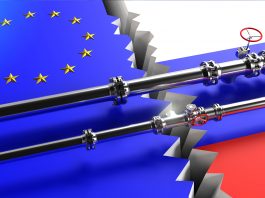The European Commission announced €1.8bn funding for 17 large-scale innovative clean energy projects on 12 July 2022, with the third round of awards under the Innovation Fund.
The European Commission (EU) has explained that the grants will be disbursed from the Innovation Fund to contribute towards a breakthrough in the development of technologies in energy-intensive industries, such as hydrogen, renewable energy, carbon capture and storage infrastructure, and manufacturing critical components for energy storage and renewables. The selected projects are located in Bulgaria, Finland, France, Germany, Iceland, the Netherlands, Norway, Poland, and Sweden.
“Today’s grants support innovative businesses across Europe to develop the cutting-edge technologies we need to drive the green transition. The Innovation Fund is an important tool to scale up innovations in renewable hydrogen and other solutions for European industry. Compared to the first disbursement round, the funds available have increased by 60%, enabling us to double the number of projects supported. This is a big boost for the decarbonisation of energy-intensive industry in the European Union,” explained Frans Timmermans, Executive Vice-President.
These 17 EU clean technology projects were selected under the second call for large-scale projects, meaning they have capital costs above €7.5m. Each project was evaluated by independent experts, who considered each project’s ability to reduce greenhouse gas emissions compared to current technologies and to innovate beyond the state-of-the-art while being sufficiently mature for deployment. Other selection criteria included the projects’ potential for scalability and cost-effectiveness.
The selected EU clean technology projects cover a wide range of sectors contributing to the EU’s decarbonisation efforts such as production, distribution and use of green hydrogen, waste-to-hydrogen, offshore wind, manufacturing of photovoltaic (PV) modules, battery storage and recycling, carbon capture and storage, sustainable aviation fuels, and advanced biofuels. Together, over their first ten years of operation, they have the potential to save 136 million tonnes of CO2eq.
Additionally, up to 20 promising projects but not yet adequately mature for a grant, will be pre-selected for project development assistance by the European Investment Bank. These will be announced in the fourth quarter of 2022.
Projects in brief: Energy-intensive industries
Cement – four projects:
- One of the projects, located in Germany, will deploy a second-generation oxyfuel carbon capture process at a cement plant and provide it as raw material for further processing into synthetic methanol;
- Another, located in Poland, will create an end-to-end carbon capture and storage chain starting from CO₂ capture and liquefaction at a cement plant to storage in offshore sites;
- A third project will capture the CO₂ emissions coming from exhaust gases produced during lime production and store them permanently in offshore geological formations in France; and
- Another project will be the first full-chain carbon capture and storage project in Bulgaria, linking CO₂ capture facilities at a cement plant with offshore permanent storage in a depleted gas field in the Black Sea, through an onshore and offshore pipeline system.
Chemicals – three projects:
- In Finland, a project will chemically recycle plastics to be used as a feedstock for refineries;
- Another project in Sweden will create a first-of-a-kind methanol plant converting CO₂, residue streams, renewable hydrogen, and biogas to methanol; and
- An additional project in Sweden will produce a new fibre from pulp to substitute polyester in textile applications.
Hydrogen – three projects:
- In the Netherlands, one project will produce, distribute, and use green hydrogen through an electrolyser supplied by offshore wind electricity;
- Another one will produce 15,500 tonnes of renewable hydrogen per year; and
- The third will process non-recyclable solid waste streams and transform them primarily into hydrogen.
Refineries – two projects:
- In Norway, one project will build and operate the world’s first commercial-scale drop-in biofuel production facility, which will convert forestry waste into advanced second-generation biofuels and biochar; and
- A project in Sweden will build a large-scale facility for the production of synthetic sustainable aviation fuel, using CO₂ captured at a combined heat and power (CHP) plant.
Manufacturing of components for energy storage or renewables production – three projects:
- In Poland, a project will create a manufacturing plant of innovative electrochemical battery systems to provide short-term electricity storage;
- Another project in the north of France will build a manufacturing plant for photovoltaics based on innovative heterojunction technology; and
- The third project in France will construct a Li-Ion recycling plant at the Dunkirk battery cluster for producing and refining black mass, providing access to a secondary source of battery raw material.
Renewable energy
- In the German part of the North Sea, a project will construct and operate an offshore wind farm, which will implement innovative solutions for turbines and hydrogen.
Carbon capture and storage infrastructure
- A project in Iceland will build a highly scalable onshore carbon mineral storage terminal with an estimated overall storage capacity of 880 million tonnes of CO₂.
Creating financial incentives to invest in next-generation low-carbon technology
The Innovation Fund holds approximately €38bn1 until 2030, from the EU Emissions Trading System (ETS), and intends to generate the appropriate financial incentives for companies and public authorities to invest in the next generation of low-carbon technologies. This will give EU companies a significant advantage in becoming global technology leaders.
The first call for large-scale projects awarded total grants of €1.1bn to seven projects in energy-intensive industries, hydrogen, carbon capture, use and storage, and renewable energy. 15 EU clean technology projects were awarded project-development assistance.
With a 60% increase in funds compared to the first round of the Innovation Fund, the EU is more than doubling the number of projects it is supporting, as well as expanding its geographical reach to more countries, including in Eastern Europe, and speeding up the application and evaluation process.
Successful projects under this second call will now start to prepare their individual grant agreements with the European Climate, Infrastructure and Environment Executive Agency (CINEA), which is the implementing agency of the fund. These are expected to be finalised in the fourth quarter of 2022, which will allow the European Commission to adopt the corresponding grant award decision and to start distributing the grants.
Additionally, in autumn the European Commission will release the third call for its large-scale projects. As announced in the REPowerEU Plan, the funding available will be doubled to approximately €3bn to further support the EU’s independence from Russian fossil fuels. Projects that were not successful in the previous calls are encouraged to re-apply.
In July 2021, the European Commission proposed as part of the fit for 55 packages to top up the Innovation Fund, currently sourced from 450 million allowances from the existing ETS in 2021 to 2030, with 50 million allowances from the existing ETS and 150 million allowances from the new system covering emissions from road transport and buildings. In addition, under the proposal, allowances which would otherwise be allocated for free to industry sectors covered by the carbon border adjustment mechanism would be auctioned and added to this fund.
- This estimate is based on a carbon price of €75/ton of CO2









